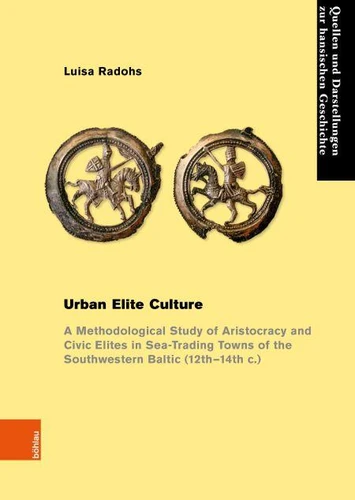Urban Elite Culture. A Methodological Study of Aristocracy and Civic Elites in Sea - Trading Towns of the Southwestern Baltic (12th - 14th c.)
Par :Formats :
Disponible dans votre compte client Decitre ou Furet du Nord dès validation de votre commande. Le format PDF est :
- Compatible avec une lecture sur My Vivlio (smartphone, tablette, ordinateur)
- Compatible avec une lecture sur liseuses Vivlio
- Pour les liseuses autres que Vivlio, vous devez utiliser le logiciel Adobe Digital Edition. Non compatible avec la lecture sur les liseuses Kindle, Remarkable et Sony
 , qui est-ce ?
, qui est-ce ?Notre partenaire de plateforme de lecture numérique où vous retrouverez l'ensemble de vos ebooks gratuitement
Pour en savoir plus sur nos ebooks, consultez notre aide en ligne ici
- Nombre de pages691
- FormatPDF
- ISBN978-3-412-52861-4
- EAN9783412528614
- Date de parution09/10/2023
- Protection num.pas de protection
- Taille40 Mo
- Infos supplémentairespdf
- ÉditeurBöhlau
Résumé
Medieval towns were vibrant and complex social environments where diverse groups and lifestyles encountered and influenced each other. Surprisingly, in the study of urban archaeology, the aristocracy, one of the leading and most influential groups in medieval society, has so far been neglected. This book puts "aristocracy in towns" on the archaeological research agenda. The interdisciplinary and comparative study explores the significance and representation of aristocrats and their interaction with civic elites in sea-trading towns of the southwestern Baltic from the 12th to the 14th centuries.
Essentially, however, the analysis of urban elite culture leads to discussion of a much more fundamental issue: the informative value of material culture for the investigation of social conditions. The book provides new archaeological approaches to the study of social differentiation in towns, and contributes to a deeper understanding of the complexity of urban social structures.
Essentially, however, the analysis of urban elite culture leads to discussion of a much more fundamental issue: the informative value of material culture for the investigation of social conditions. The book provides new archaeological approaches to the study of social differentiation in towns, and contributes to a deeper understanding of the complexity of urban social structures.
Medieval towns were vibrant and complex social environments where diverse groups and lifestyles encountered and influenced each other. Surprisingly, in the study of urban archaeology, the aristocracy, one of the leading and most influential groups in medieval society, has so far been neglected. This book puts "aristocracy in towns" on the archaeological research agenda. The interdisciplinary and comparative study explores the significance and representation of aristocrats and their interaction with civic elites in sea-trading towns of the southwestern Baltic from the 12th to the 14th centuries.
Essentially, however, the analysis of urban elite culture leads to discussion of a much more fundamental issue: the informative value of material culture for the investigation of social conditions. The book provides new archaeological approaches to the study of social differentiation in towns, and contributes to a deeper understanding of the complexity of urban social structures.
Essentially, however, the analysis of urban elite culture leads to discussion of a much more fundamental issue: the informative value of material culture for the investigation of social conditions. The book provides new archaeological approaches to the study of social differentiation in towns, and contributes to a deeper understanding of the complexity of urban social structures.



